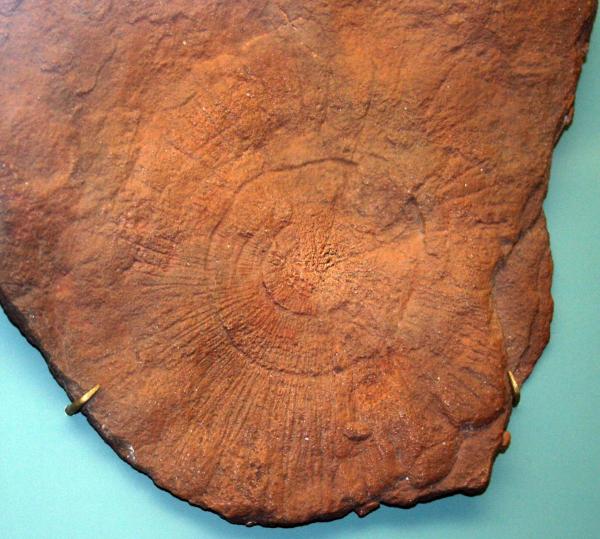
There’s no fooling you! What we have here is Cyclomedusa radiata, a particularly common yet a particularly enigmatic character of the Ediacaran biota. Originally, as the genus name suggests, it was thought to be a jellyfish. (“Medusa” refers to the non-polyp umbrelliform life-stage of certain cnidarians, including, especially, jellyfishes. Which, to confuse matters further, are neither jelly nor fish.) But that was always tentative. A 1949 paper by Reginald C. Sprigg that described C. radiata was entitled “Early Cambrian ‘jellyfishes’ of Ediacara, South Australia, and Mount John, Kimberley District, Western Australia”—note the scare quotes! There are people around now who think that it was a benthic polyp—like a sea anemone—or even a bacterial mat. (Stephanie Keep mentioned the alarming state of disagreement on the Ediacaran biota while discussing Dickinsonia costata a while back.) Whatever it was, Dan Coleman was the first person to identify the picture of it here, so congratulations to him, and a tip of the grooved circular hat to Steven Newton for the photograph.

